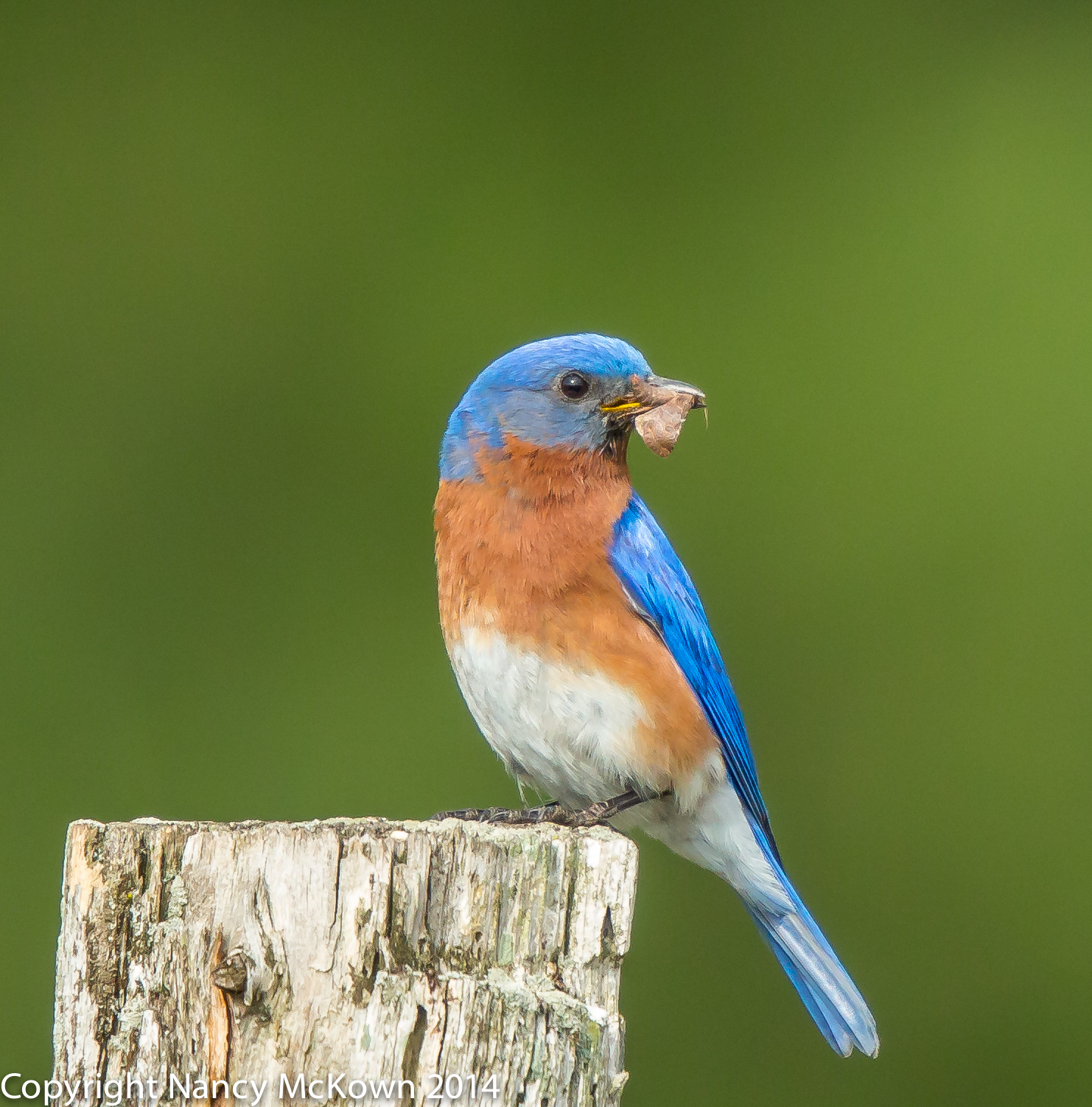Photographing Hard Working Bluebird Parents
Raising 2-3 clutches of baby bluebirds each summer is no job for slackers. First, there’s the 12-18 days devoted to incubation…. a quiet time. Once the eggs hatch, both of the devoted parents spend all of their waking hours warding off predators and competitors, gathering insects and fruit to feed the hatchlings and hauling out waste (fecal sacs) from the nest. Each clutch of babies makes its demands for 16 -21 days. After that, they are mature enough to leap and soar, never to return to the nest- tho the parents still bring food to them in the trees.
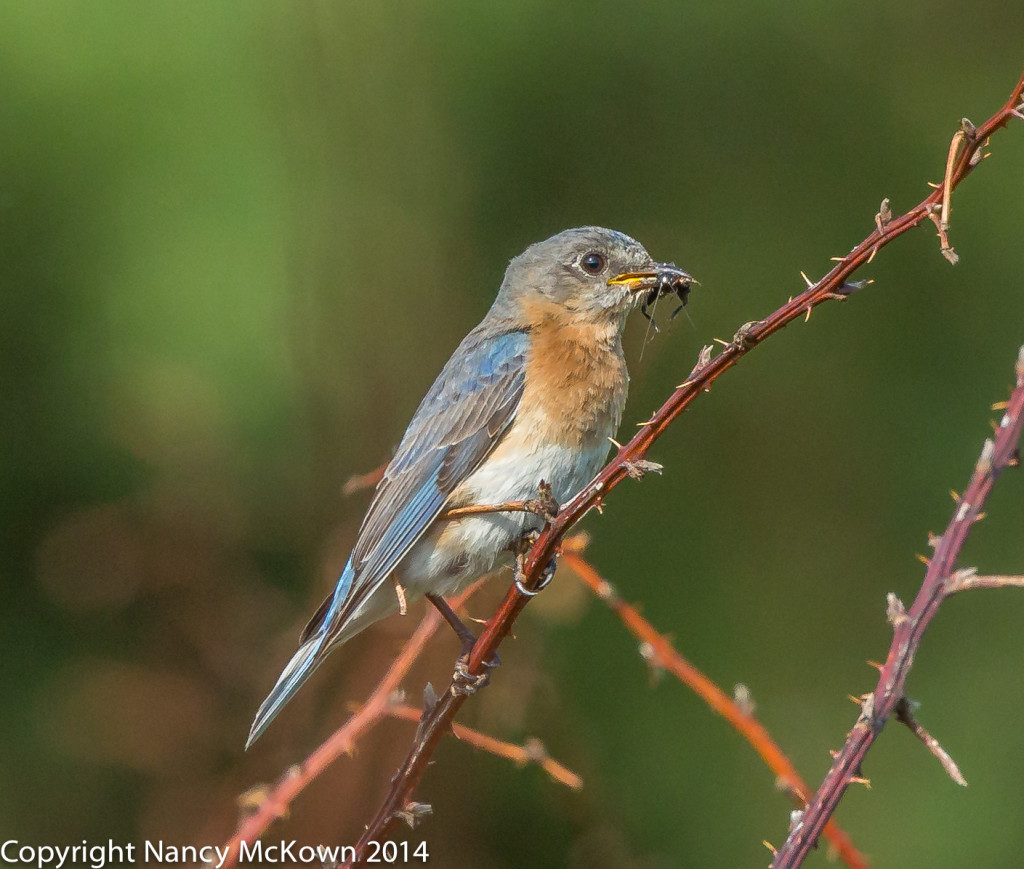
Brambles Before Bringing Her Catch to her Fledglings.
ISO 1600; f/9.0; 1/1600 Second
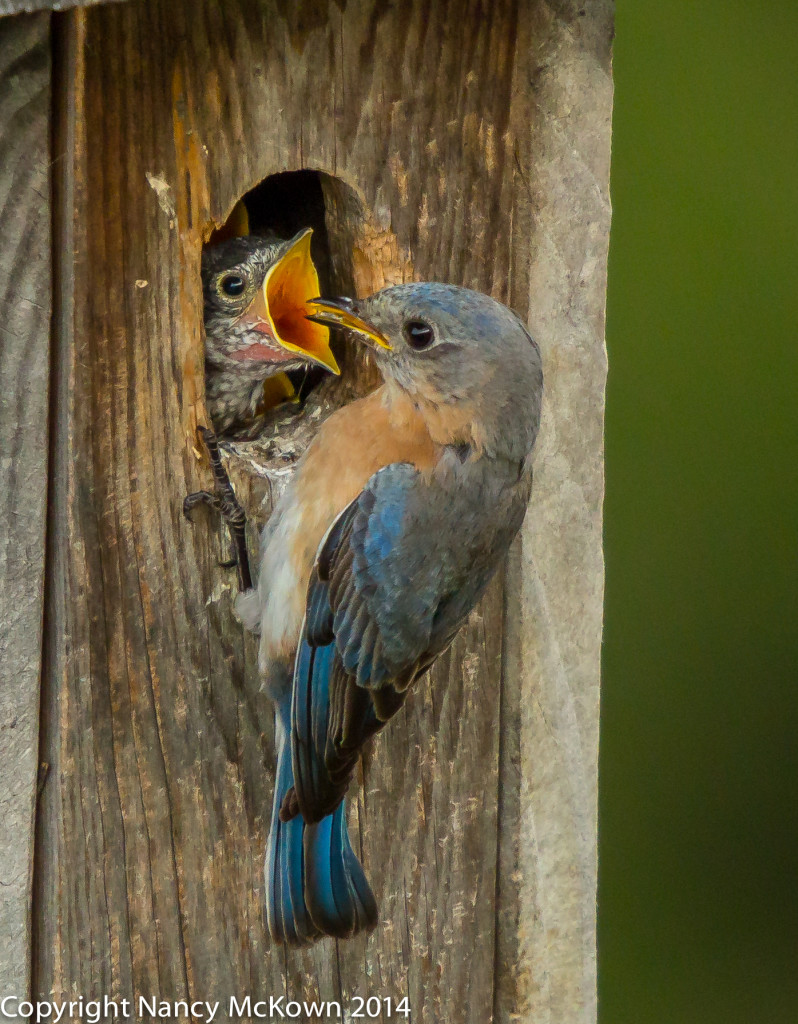
ISO 1600; f/8.0; 1/800 Second
Equipment Setup
I set up my tripod early one morning near the bird houses after navigating a formidable field of raspberry brambles gone wild. The backdrop was beautiful, full of lilac bushes and pine trees. To capture that background, the bluebirds would have to perch (fairly close) on one of the tall raspberry stalks before taking the food to the fledglings. This happened only once.
It was a rather low light day which made for nice balanced morning light and no harsh shadows. Sadly, there was not quite enough light to get the depth of field I needed and still keep the ISO below 1000. The bluebirds were cautiously watchful – but persistent in their duties, so I was able to get quite a few photos of feeding activity.
NOTE: This field of brambles was also the territory of a curious field sparrow who was much bolder and willing to pose for this photographer. Field sparrows are not cavity nesters and did not bother the bluebird parents. He just sang his heart out while they worked.
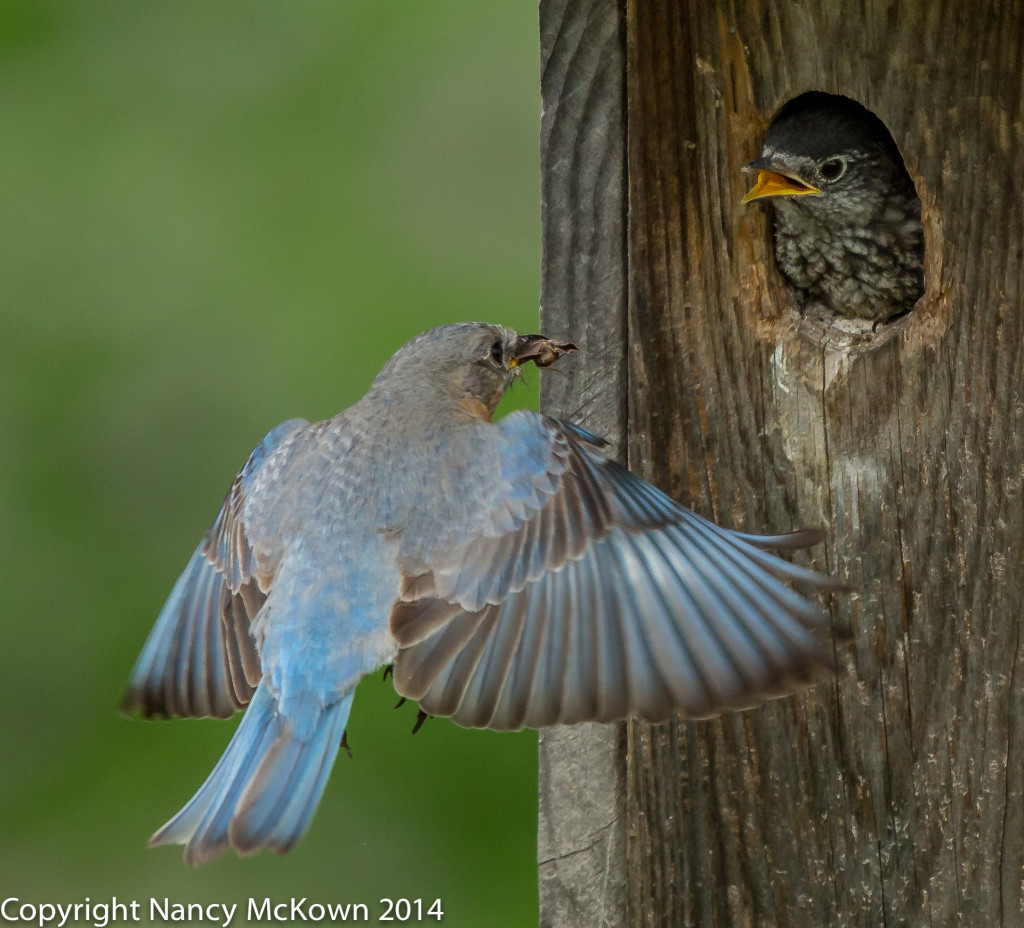
ISO 1250; f/9.0; 1/2000 second
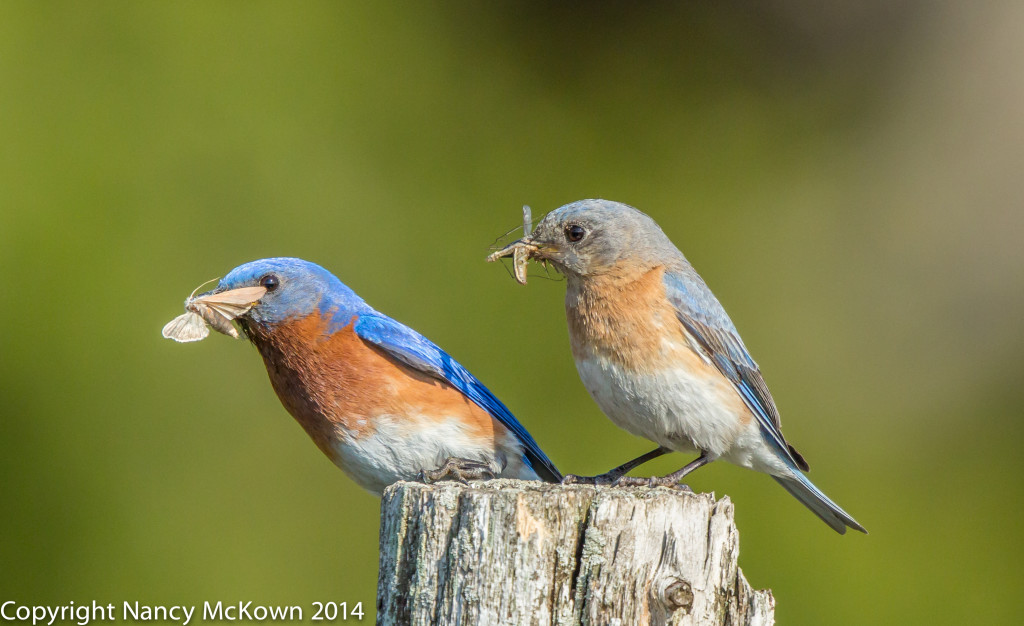
ISO 1600; f/9.0; 1/2500 Second
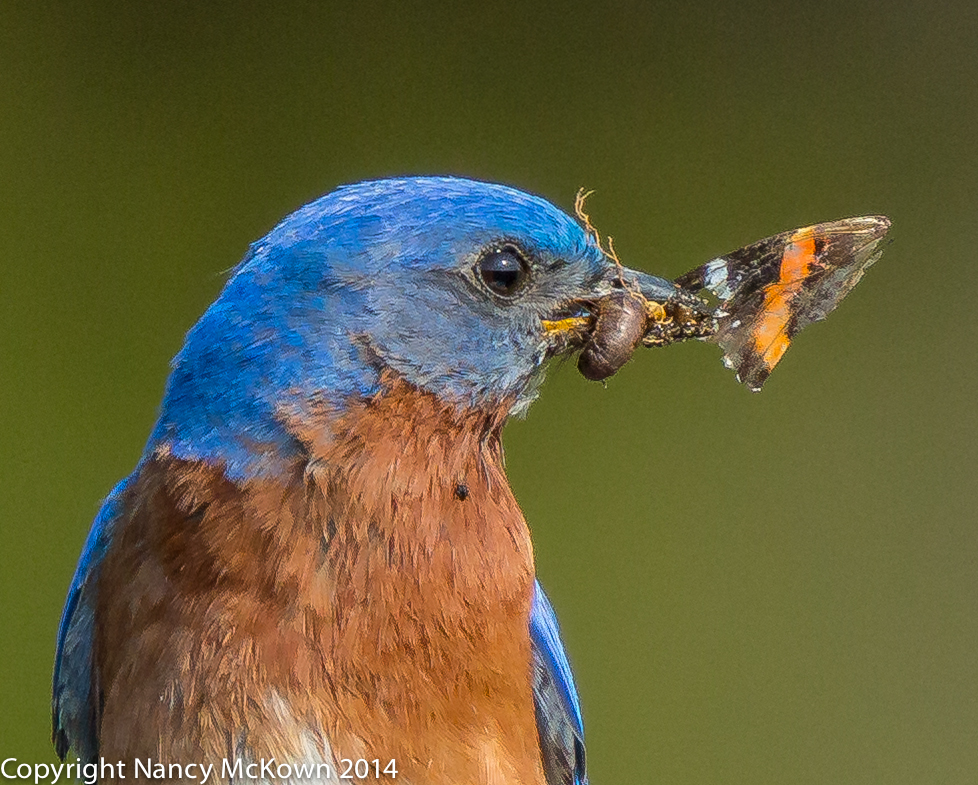
Notice the Tick Attached Right Below the Neck.
ISO 1250; f/8.0; 1/1250 Second
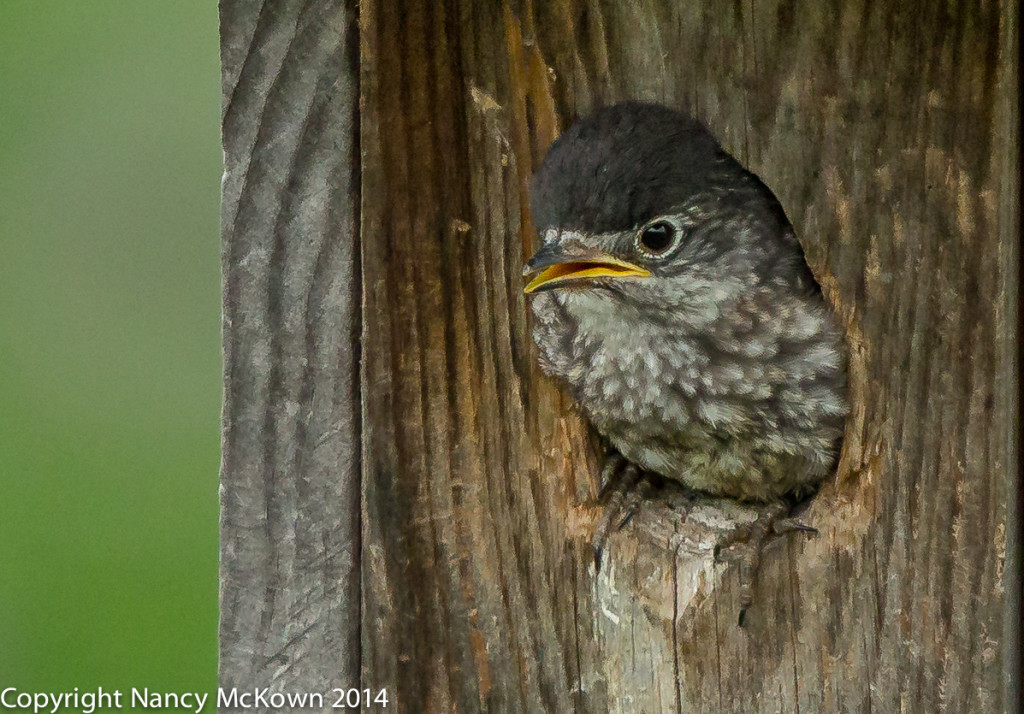
ISO 2000; f/9.0; 1/2000 Second
Photographing Cavity Nesters
Eastern bluebirds are cavity nesters, which means they build their nests in a chamber or cavity. The Michigan DNR pairs 2 blue bird houses per location in the prairie areas of the Allegan State Game Area. Blue birds are highly territorial. If a second male bluebird is foolish enough to try to establish a nest in the same location, the male of the first house will aggressively chase the second male away. Other cavity nesting species like house wrens or swallows will fight bluebirds over a single nesting box. This strategy will often bring two different cavity nesting species together, minimizing competition and avoiding a possible war over housing. See this link for another post and more photos of Eastern Bluebirds
Attracting Eastern Bluebirds
Over the last few decades, nesting habitat for cavity nesters has been depleted. To support the local population, the DNR sets up and maintains nest boxes in the Allegan SGA. To attract bluebirds, placement of the bluebird houses must be in a habitat and location that is suitable. Predatory controls, proper ventilation and drainage holes must be built into the design. Like most nest boxes, bluebird houses must be regularly monitored and have accessible doorways for opening and cleaning. Information on selecting the right nest box can be found at this link.
